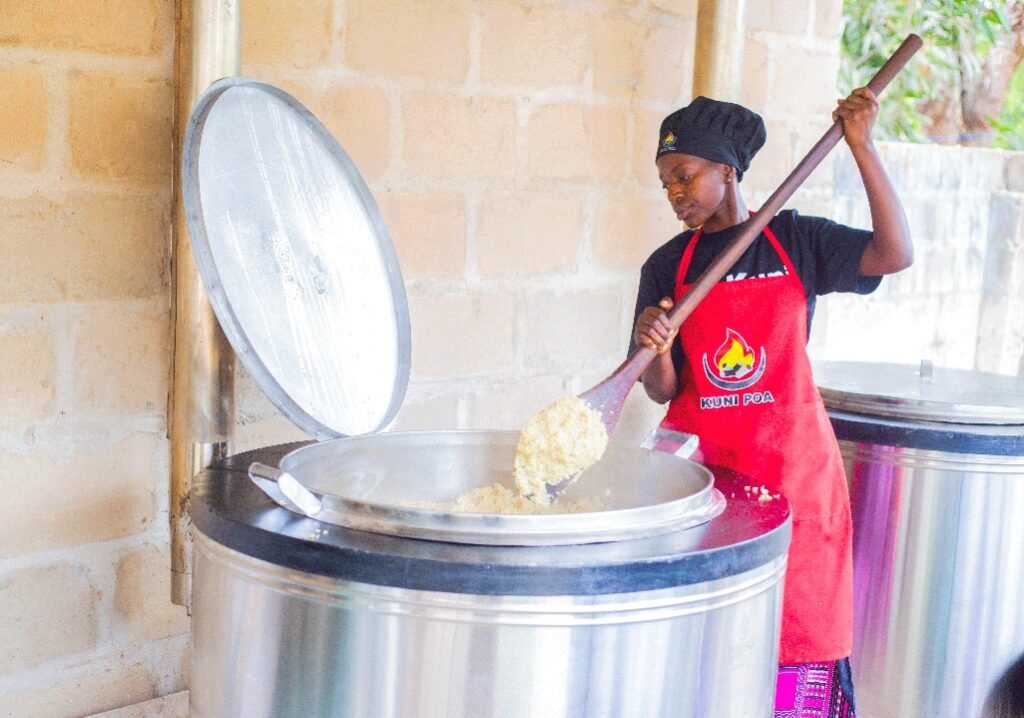Clean Energy Transforms Tanzania School Feeding Model
Tanzania’s €1 million Hanny G Investment embeds clean-cooking finance into school-feeding programs, replacing firewood with biomass and biogas systems across 18 000 schools. The initiative links education budgets to climate finance, cutting 1.5 million tonnes of biomass use.

Tanzania’s integration of clean cooking technology into national school-feeding programs marks a turning point in the intersection between energy access, public health, and social enterprise finance. Hanny G Investment’s €1 million raise to deliver cleaner biomass and biogas systems across rural schools represents more than a localized development project — it is a structural indicator of how Tanzania’s decarbonization agenda is beginning to absorb private capital. With over 18,000 public schools and nearly 12 million enrolled pupils, the substitution of firewood with efficient stoves could cut institutional biomass consumption by an estimated 1.5 million tonnes annually, equivalent to nearly 5% of Tanzania’s total wood-fuel use.
The investment arrives as Tanzania pursues its National Energy Policy 2025 objective of lifting access to clean cooking from 5% in 2020 to 30% by 2030. The government’s current expenditure on school meals — roughly TZS 550 billion annually — creates a direct fiscal entry point for scaling cleaner fuels through public procurement. By embedding clean energy within education budgets, the initiative reduces dependence on separate donor funding streams while providing stable cash flow for social enterprises such as Hanny G. The €1 million infusion, when structured under blended-finance terms, can leverage approximately €6–8 million in private co-investment, creating a self-reinforcing market signal for sustainable infrastructure in social sectors.
Macroeconomically, the transition from biomass reduces Tanzania’s import dependence on LPG, stabilizing the trade balance and mitigating deforestation-driven carbon costs. Forestry contributes 3.5% of GDP and over 700,000 jobs, yet unsustainable harvesting costs the economy an estimated 2% of GDP annually in lost ecosystem services. By shifting schools toward efficient biomass stoves or biogas digesters, aggregate fuel costs could decline by 20–25%, freeing public funds for nutrition and infrastructure improvements.
Financially, the involvement of private enterprises underlines the evolution of Tanzania’s impact-investment ecosystem. Hanny G’s project benefits from concessional credit lines and local supply-chain linkages, aligning with Tanzania’s drive to localize value addition in green manufacturing. The financing structure also mirrors emerging East African patterns where catalytic capital supports early adopters to reach bankability, later integrating with local credit providers such as CRDB (DSE: CRDB) or NMB Bank (DSE: NMB).
On the social side, the project’s gender impact is substantial. Women and girls spend up to 18 hours per week gathering firewood in rural areas; school-level substitution frees labor and increases classroom attendance, feeding into the demographic dividend that underpins Tanzania’s long-term 5.7% GDP growth forecast. The multiplier effect also extends into carbon markets. With verified emission reductions of approximately 1.2 tonnes CO₂ per student per year, school conversions could unlock up to 3 million voluntary carbon credits annually, each currently valued between $4 and $7.
The strategic timing coincides with the African Development Bank’s Clean Cooking Fund pipeline and emerging European green-finance partnerships seeking scalable African energy-social hybrids. Tanzania’s ability to align social spending, climate finance, and SME industrial capacity demonstrates the fusion of fiscal pragmatism and environmental ambition now characterizing its development model.
By 2027, key indicators will include the number of school conversions completed, the share of clean cooking households rising beyond 15%, and corresponding reductions in wood-fuel imports. If implemented at national scale, Tanzania’s education-linked energy model could become a continental prototype, illustrating that climate transition financing is viable even within public-service ecosystems when fiscal flows are disciplined, capital structures transparent, and impact measurement rigorous.




